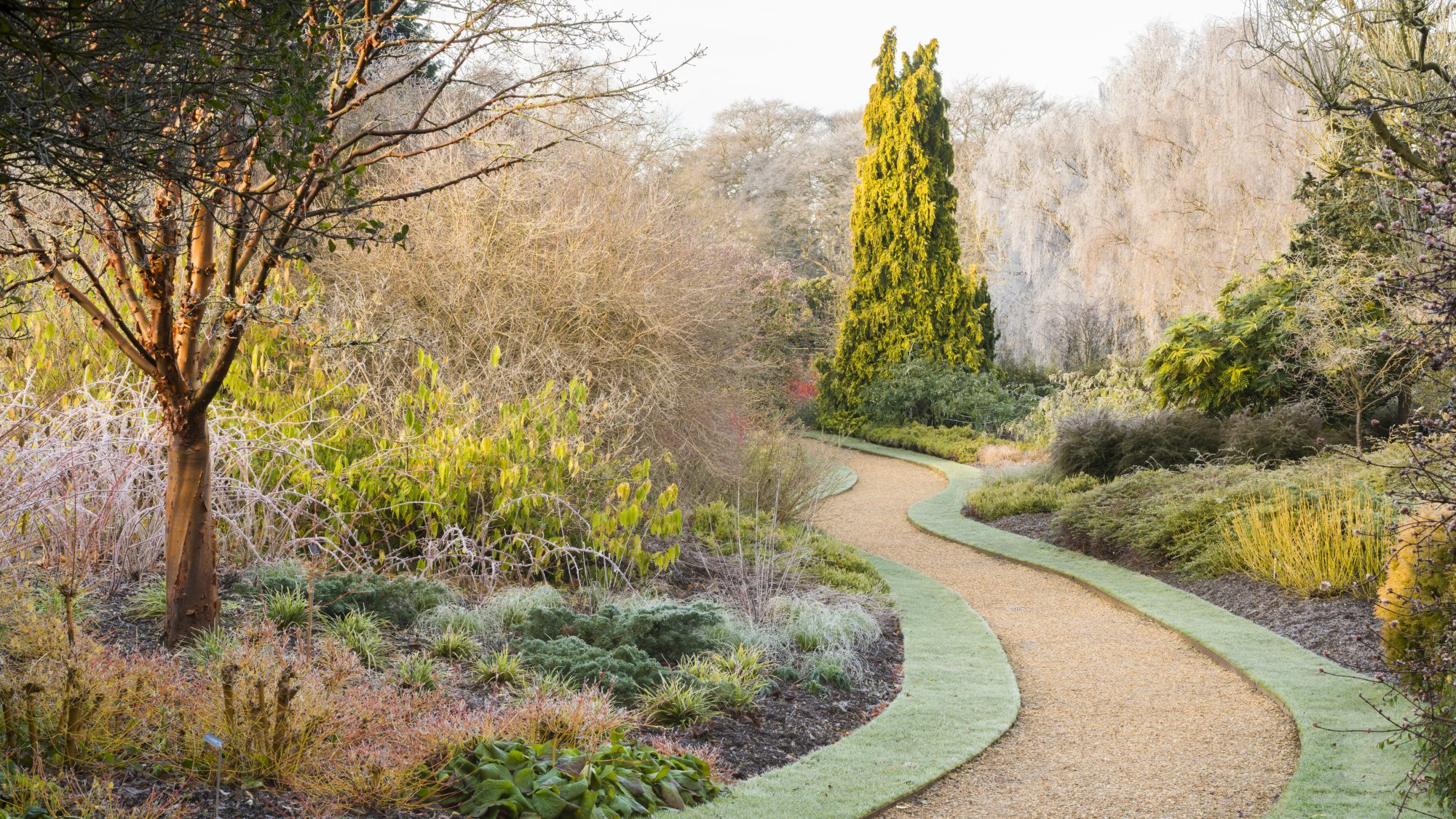Colour
The plants provide a succession of colour December to the end of March. Stems are a dominant feature and provide colour in reds, oranges, yellows and green from dogwoods, willow, bamboo and brambles along with sedges and grasses as well as a succession of bulbs. Trees also play their part – ornamental barks display burnt copper, mahogany and amber tones from the snake-bark maple Acer capillipes, Acer griseum and Prunus serrula along with the warm pink, buff and yellow bark of Betula utilis albo sinensis.
Top tip for colour: coloured stems – dogwoods, willows and brambles are hard pruned in early spring to provide coloured new growth for the next season. Golden bamboo is crown lifted to 1 metre in late autumn/winter to reveal golden stems.

Scent
The winter garden is crammed with shrubs which pump out their perfume to attract the small number of insect pollinators around early in the year. Daphne, honeysuckle, mahonia, sarcococca, witchhazel and viburnum are some examples of plants providing a succession of scents ranging from almond, lily of the valley, and spice to the sweet scent of Daphne bhloua ‘Jacqueline Postill’. The scents linger in the air, contained by the clever structure provided by the boundary hedges.
Top tip for scent: the scented plants are placed very close to the path and in places are mirrored on either side to provide a wall of scent.

Structure
Enclosing evergreen hedging provides a dark green backdrop for the brightly coloured plants. It also envelopes not just the plants but also their scent.
Undulations create small valleys where ‘rivers’ of plantings keep the eye wandering and a meandering path through and around the back of the garden provides a gentle route through the plantings with gentle turns providing new vistas and views.
A framework of strategically placed trees provide focal points throughout the garden and provide height and as well as seasonal interest with their flowers or ornamental bark.
A combination of aspect and topography provide a stage for backlighting and spotlighting key plants strategically placed to catch the low, directional light of the winter sun.

Flower
A succession of flowers beginning in December from shrubs including varieties of viburnum, mahonia, witchhazel and honeysuckle; herbaceous perennials (such as hellebores) and densely planted bulbs (snowdrops, winter aconites, narcissi) contrast with the colourful stems and interesting tree barks. Trees with winter blossom also add to the flowering interest. Dead flower heads of sedums and grasses are used for added structure, providing strong silhouettes which glitter with winter frosts.





